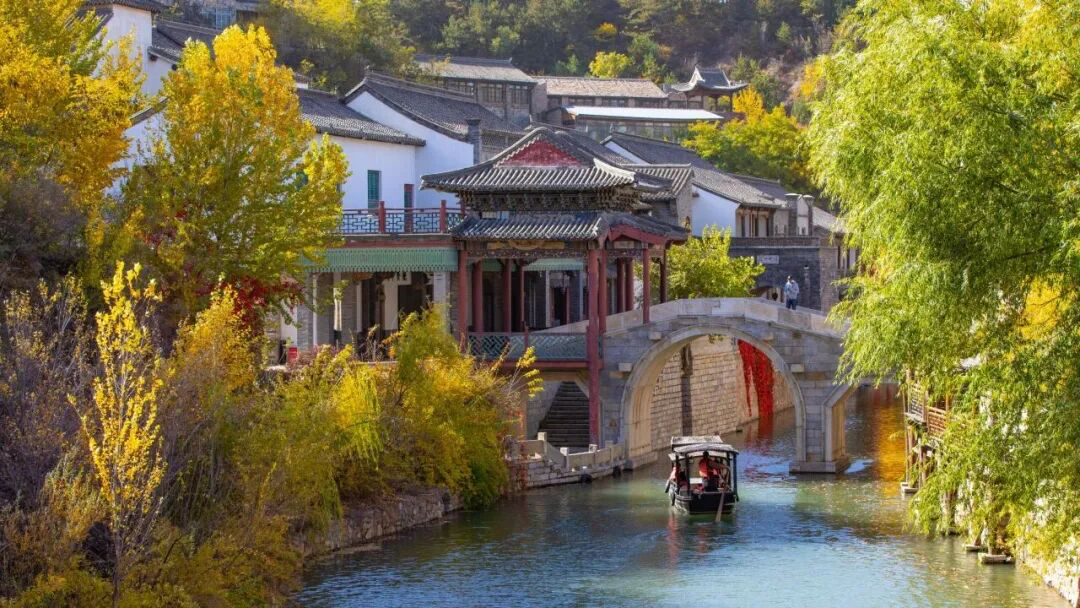Beijing Central Axis was successfully listed as a UNESCO World Heritage Site on July 27. What heritage sites are included along the Central Axis, and what attractions are located in the surrounding areas?
Drum and Bell Towers

At the northern end of Beijing Central Axis, the Drum Tower and Bell Tower served as the city's timekeeping center during the Yuan, Ming, and Qing Dynasties. Among all the city's clock and drum towers, Beijing's Drum and Bell Towers are the largest and most grand in scale and design.
The Drum and Bell Tower Square, situated between the two towers, is a place where Beijingers have enjoyed their leisure time. Today, the area around the Drum and Bell Towers has become a comprehensive cultural, artistic, and tourist destination, allowing visitors to experience the deep historical significance of Beijing.
Surrounding attraction: Hong'en Temple

This year, Hong'en Temple, located at the northern end of Beijing Central Axis and with a history of over 700 years, has opened to the public.
Situated to the north of Beijing's Drum and Bell Towers, Hong'en Temple is known as the "important tail of the Central Axis". It has undergone multiple functional transformations over the years. Today, through protective restoration and adaptive reuse, Hong'en Temple has become a civic cultural space featuring digital art exhibitions, a Hong'en Temple history exhibit, a Central Axis-themed post office, a bookstore, and creative cultural shops.
Wanning Bridge
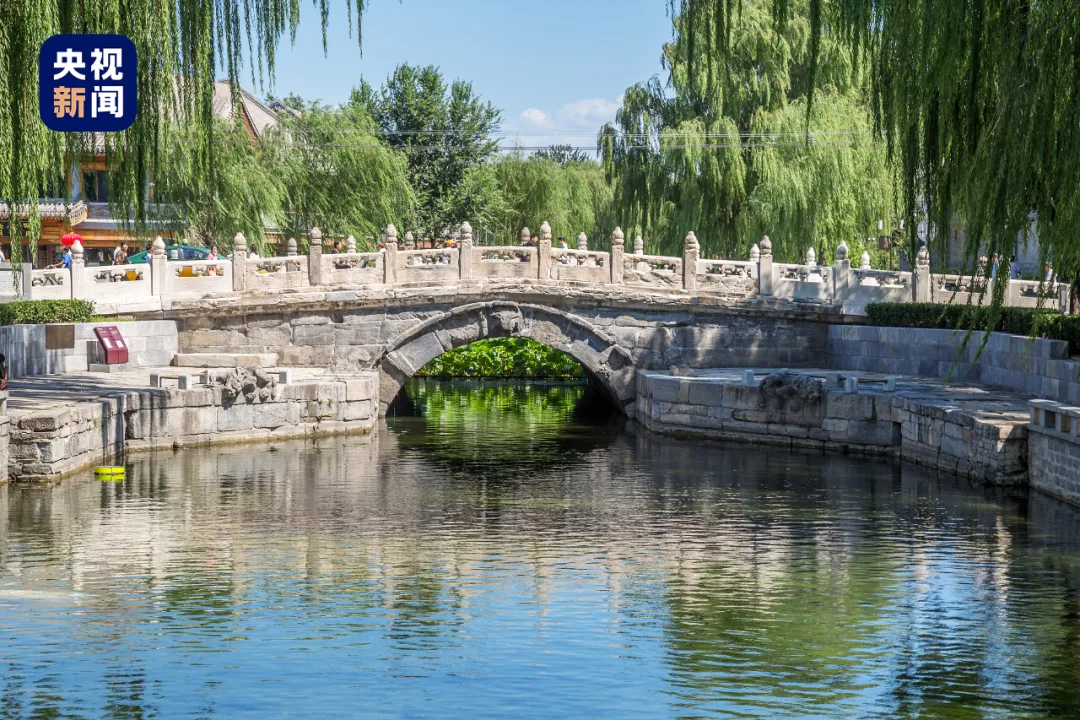
At the intersection of Beijing Central Axis and the Grand Canal stands Wanning Bridge, which has been in use since the Yuan Dynasty and is known as the "First Bridge of the Central Axis". It is the oldest surviving ancient bridge on the Beijing section of the Grand Canal.
Today, Wanning Bridge has been rejuvenated through multiple restorations and preservation efforts, now displaying new vitality and vigor.
Surrounding attraction: Prince Kung's Palace Museum
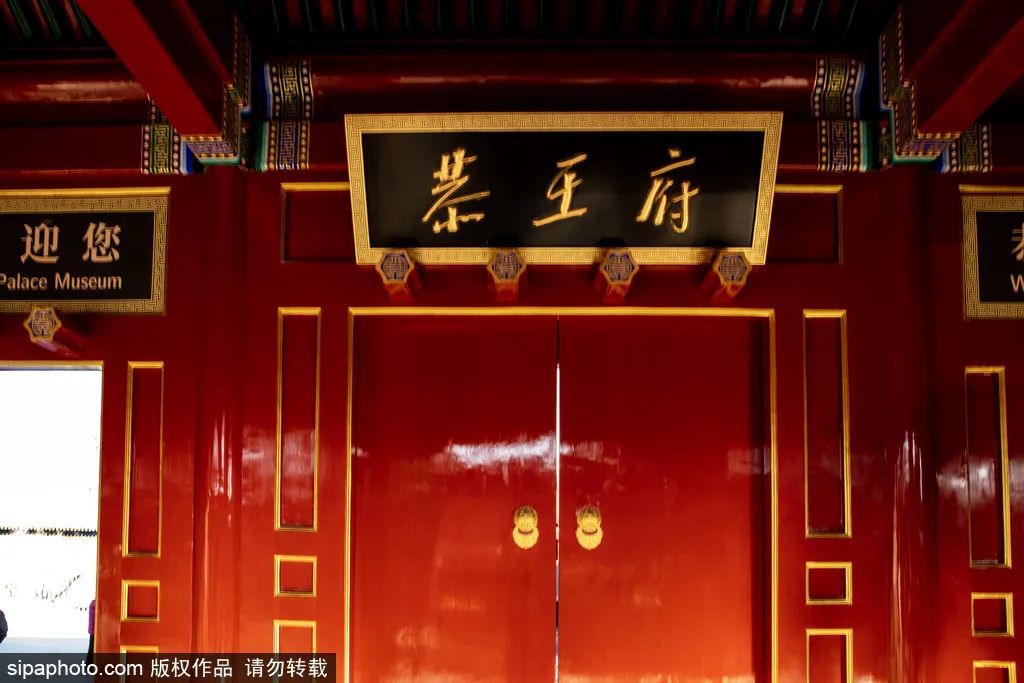
Prince Kung's Palace Museum, established on the site of the former Prince Kung's residence, is a museum focused on the research, display, and promotion of the history and culture of the palace. In 2017, it was designated a national first-class museum. Prince Kung's Palace is the most well-preserved and the only Qing Dynasty prince's residence in Beijing open to the public, witnessing the entire history of the Qing Dynasty from its peak to its decline. This has led to the saying, "One Prince Kung's Palace, half a history of the Qing Dynasty."
The Prince Kung's Palace Museum features numerous attractions, including the Grand Theater, "Fu" Character Stele, Western-style Gate, Rear Building, Yinan Hall, Jiale Hall, Baoguang Chamber, and Xijin Studio. Be sure to visit!
Jingshan Hill

During the Yongle era of the Ming Dynasty, soil from the demolition of the old imperial city and earth excavated from the Tongzi River of the new Forbidden City were piled up here, creating the initial "Mount Wansui". During the Qing Dynasty, this mountain was renamed "Jingshan", and the name has been used ever since. Today, Jingshan Hill has become an important recreational area for the public. From the highest point of Jingshan Park, the Wanchun Pavilion, visitors can experience the charm of Beijing Central Axis and the unique grandeur of the city's layout.
Surrounding attraction: Beihai Park
Beihai Park is located at the center of Beijing and is the oldest, most well-preserved, and culturally rich classical royal garden in China.
On the eastern shore, the courtyard-style gardens such as Haopu Greek (Haopujian) Garden, Painted Boat Hall, and Xian Can Altar are hidden among verdant pine and cypress trees, blending natural charm with the elegance of Jiangnan private gardens. On the northern shore, from east to west, you will find Jingxin Studio, West Vatican, Chengguan Hall, Kowloon Wall, Chanfu Temple, and Land of Extreme Happiness. The Wulong Ting along the lakeside complements the natural scenery, creating a harmonious landscape that appears effortlessly crafted, like a landscape painting untouched by human intervention.
The Forbidden City
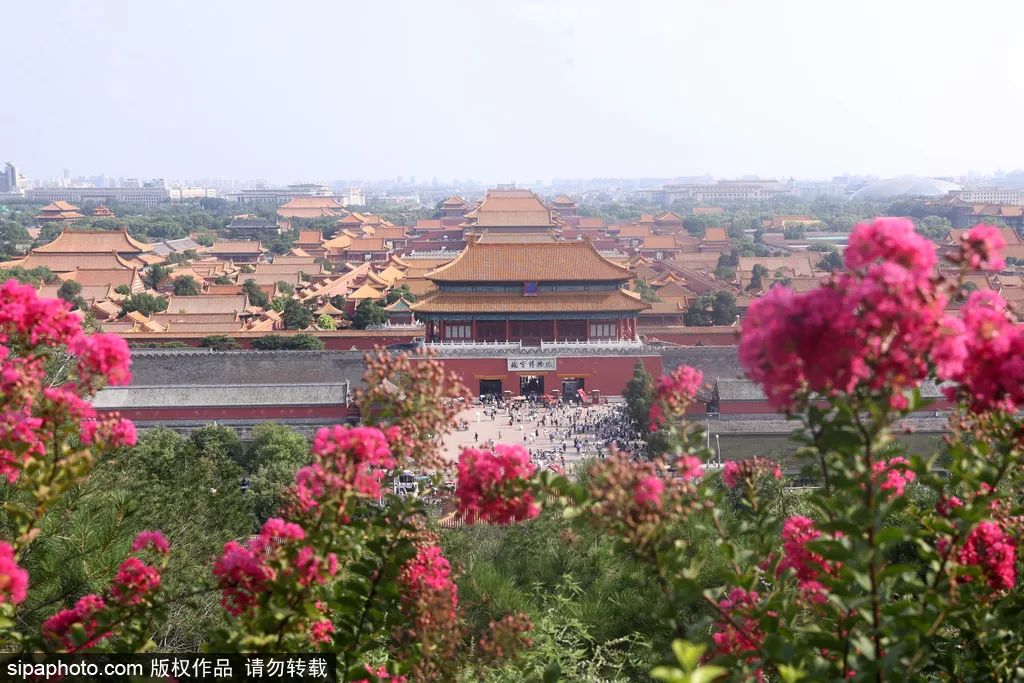
The Forbidden City covers an area of approximately 720,000 square meters and is one of the largest and best-preserved wooden structure ancient architectural complexes in the world. It is not only a treasure of ancient Chinese architectural art but also a symbol of China's long history and culture. Centered around the Central Axis, the layout of the Forbidden City is meticulously organized and symmetrical, reflecting the beauty and sense of order in ancient Chinese architecture.
Surrounding attraction: Nanchizi Museum
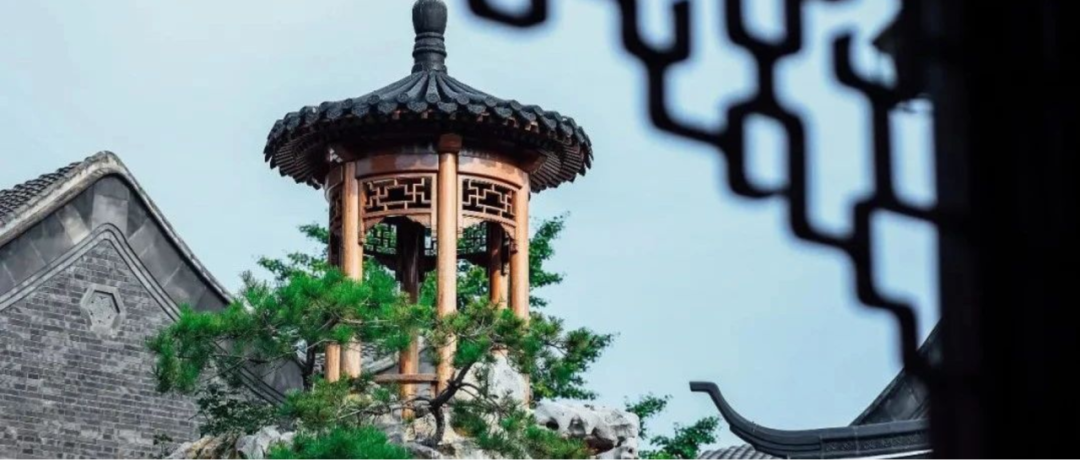
The Nanchizi Museum, adjacent to the Donghua Gate of the Forbidden City, features a main building designed in the Suzhou garden style. Covering an area of approximately 1,500 square meters, the museum preserves traditional Chinese aesthetic architectural features while also serving as an art space that meets international exhibition standards.
The courtyard of Nanchizi Museum is exquisite and compact, embodying the essence of Suzhou-style gardens. At the center of the courtyard is a pool of clear water, surrounded by traditional Chinese-style pavilions, terraces, and corridors. The space is adorned with greenery and Taihu stones, offering a picturesque, ever-changing view as you move around.
Upright Gate

During the Ming and Qing dynasties, Upright Gate served as the storage site for the emperor's ceremonial regalia and as the location for organizing ceremonial processions. The buildings on either side of Upright Gate, known as Chaofang, were where officials would rest and wait before attending court. Duanmen Gate was an integral part of the ceremonial architectural sequence leading into the imperial city and formed a key element of the court space during the Ming and Qing periods.
Surrounding attraction: Huang Shi Cheng
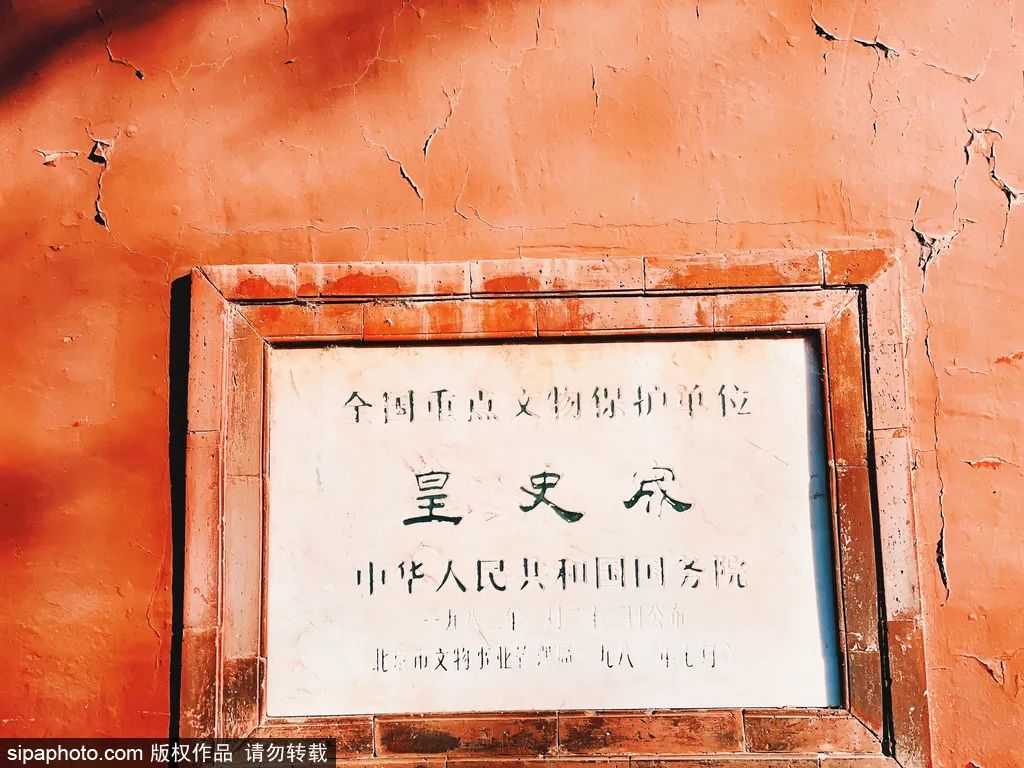
Huang Shi Cheng, established during the Ming and Qing dynasties to preserve the royal records of the imperial family, is the most well-preserved ancient royal archive in China and also plays a crucial role in Beijing Central Axis World Heritage application.
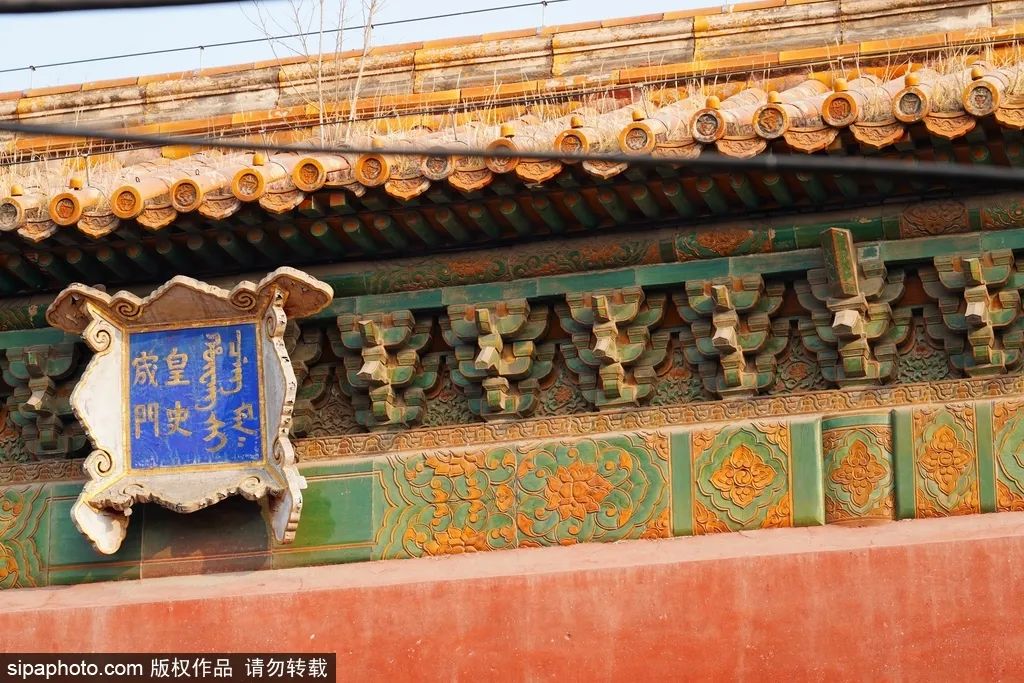
Constructed entirely of brick and stone, Huang Shi Cheng is known as the "Stone Chamber", with no wood or nails used in its construction. Inside the main hall, there is a stone platform 1.42 meters high. On top of this platform are camphor wood archival chests with an exterior of gilt bronze and engraved with dragon patterns, known as "Golden Chests". Each Golden Chest measures 1.35 meters long, 0.75 meters wide, and 1.3 meters high. Currently, 32 Golden Chests remain in the main hall of Huang Shi Cheng, while 120 more have been relocated to the new facility of the First Historical Archives of China for preservation. Each Golden Chest is carefully preserved as a precious cultural relic.
As an important component of Beijing Central Axis culture, Huang Shi Cheng attracts an increasing number of visitors who come to experience its rich historical and cultural heritage.
Tian'anmen Gate
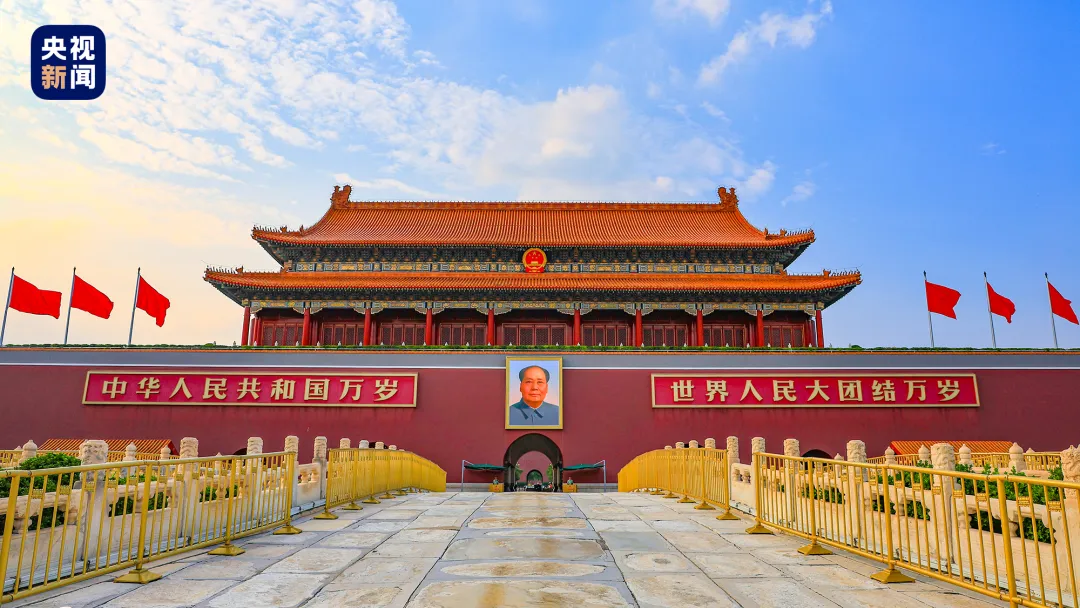
Tian'anmen, the main gate of the imperial city during the Ming and Qing dynasties, is a key building on Beijing Central Axis. Located in the heart of Beijing, it is surrounded to the south by the Outer Jinshui River and faces Tian'anmen Square. For many visitors to Beijing, taking a photo in front of Tian'anmen is a cherished experience.
Surrounding attraction: Imperial City Wall Relics

The Imperial City Wall Relics are located on the east and west sides of Tian'anmen and are the remnants of the city walls from the Ming and Qing dynasties in Beijing. Inside the Imperial City, there were various institutions serving the royal family, including offices, workshops, and warehouses.
The Ming Dynasty walls were built from the 5th to the 18th year of the Yongle reign (1407–1420). To the south was the Daming Gate (later renamed the Daqing Gate in the early Qing Dynasty). Inside the gate was a "T"-shaped plaza, with the Left Chang'an Gate and Right Chang'an Gate at the east and west ends of the plaza's northern side, and the main gate of the Imperial City, Chengtian Gate, further north. The eastern gate of the Imperial City was Dong'an Gate, the western gate was Xi'an Gate, and the northern gate was Bei'an Gate. During the Shunzhi period of the Qing Dynasty, Chengtian Gate was renamed Tian'anmen, and Bei'an Gate was renamed Di'an Gate. During the Qianlong period of the Qing Dynasty, the Imperial City was renovated, and additional walls were built outside the Left Chang'an and Right Chang'an Gates, with new gates added, named East Chang'an Gate and West Chang'an Gate. In 1926–1927, the Beiyang government's Ministry of Internal Affairs dismantled most of the Imperial City walls. The walls were originally made of large bricks, slightly tapered, standing 6 meters high, with a 2-meter thick base and a 1.73-meter thick top. The top was covered with ice plate eaves and yellow glazed tiles. Approximately 900 meters of the Imperial City wall on the east and west sides of Tian'anmen remain intact. The northern, eastern, and western walls were dismantled in 1926 and 1952, leaving only place names.
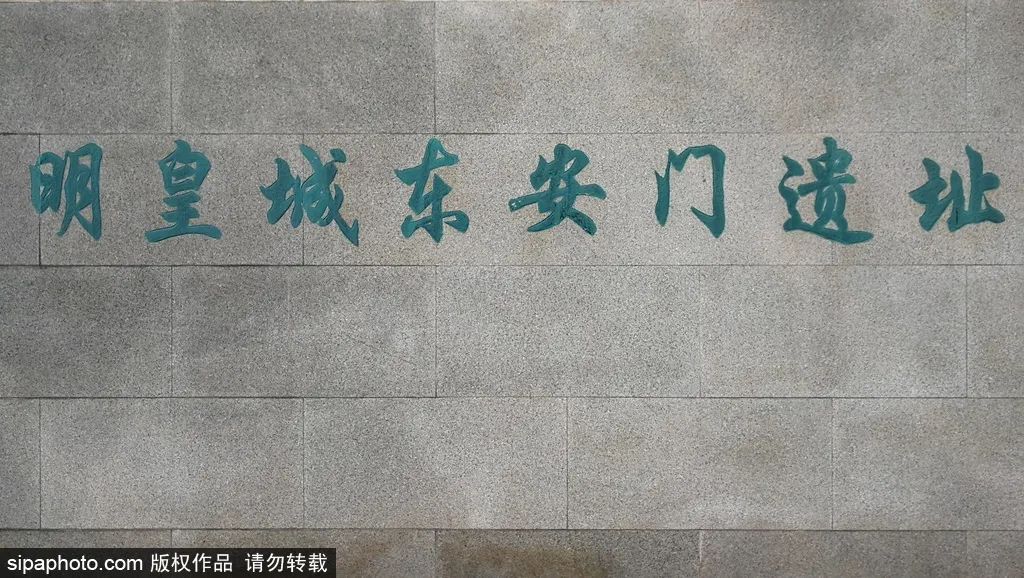
In 2001, the Dongcheng District government relocated residents from the East Imperial City Wall area to create a linear public green space. Through archaeological excavation, the precise locations of the East Imperial City Wall and Dong'an Gate were identified. A 25-meter-long section of the wall was reconstructed in the northern segment, and two sunken display areas were built to showcase parts of the Dong'an Gate ruins. With over 500 years of history, the Imperial City Wall Relics stand as a historical witness and crucial reference to the changes in the Imperial City.
Outer Jinshui Bridge
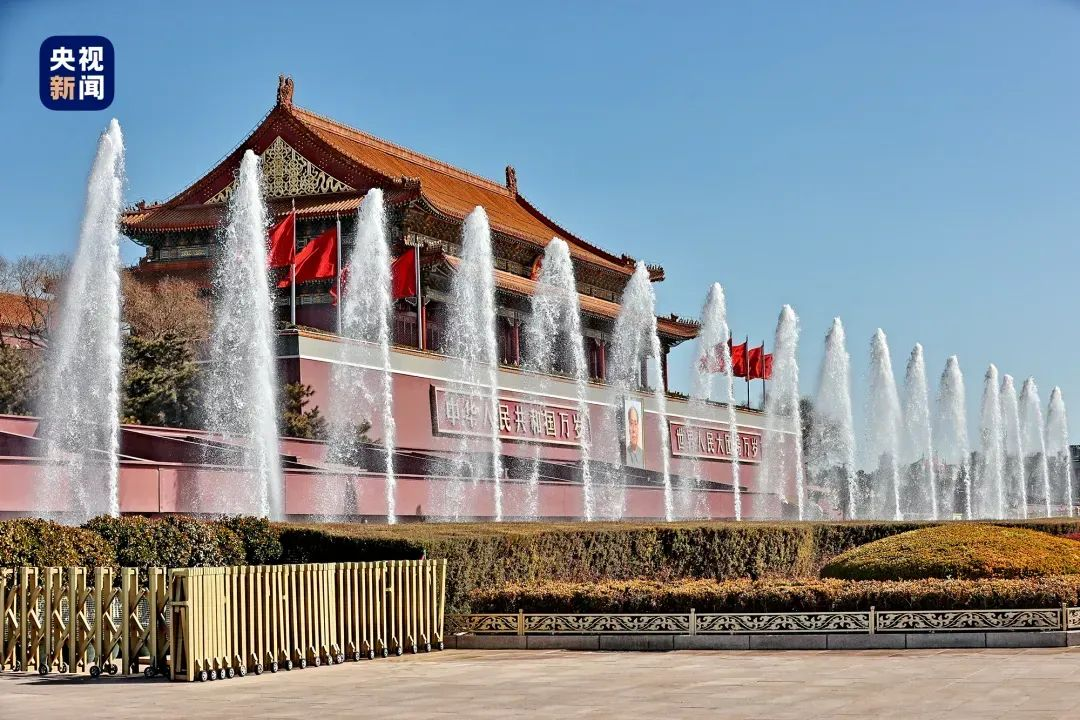
The Jinshui Bridge is divided into the Inner Jinshui Bridge and the Outer Jinshui Bridge. The Inner Jinshui Bridge is located in front of the Taihe Gate within the Forbidden City, while the Outer Jinshui Bridge is situated over the Outer Jinshui River to the south of Tian'anmen. From the Outer Jinshui Bridge, you can view the Tian'anmen Gate up close, which is truly magnificent and impressive.
Surrounding attraction: Beijing Ancient Observatory
The renowned Beijing Ancient Observatory, an imperial astronomical observatory from the Ming and Qing dynasties, is part of the Beijing Planetarium. With its long history, well-preserved architecture, and complete set of instruments, it was an important site for cultural exchanges between China and the West during the late Ming and early Qing periods.
Today, the observatory features large bronze astronomical instruments on its south, west, and north sides, including an armillary sphere, equatorial and ecliptic instruments, a horizon instrument, a quadrant, a meridian circle, a celestial globe, and a horizon astrolabe. These eight Qing Dynasty astronomical instruments are classified as national first-grade cultural relics and are considered national treasures. It's a fantastic spot to visit with kids during summer vacation!
Tai Miao (Imperial Ancestral Temple) and Sheji Altar (Altar of Land and Grain)
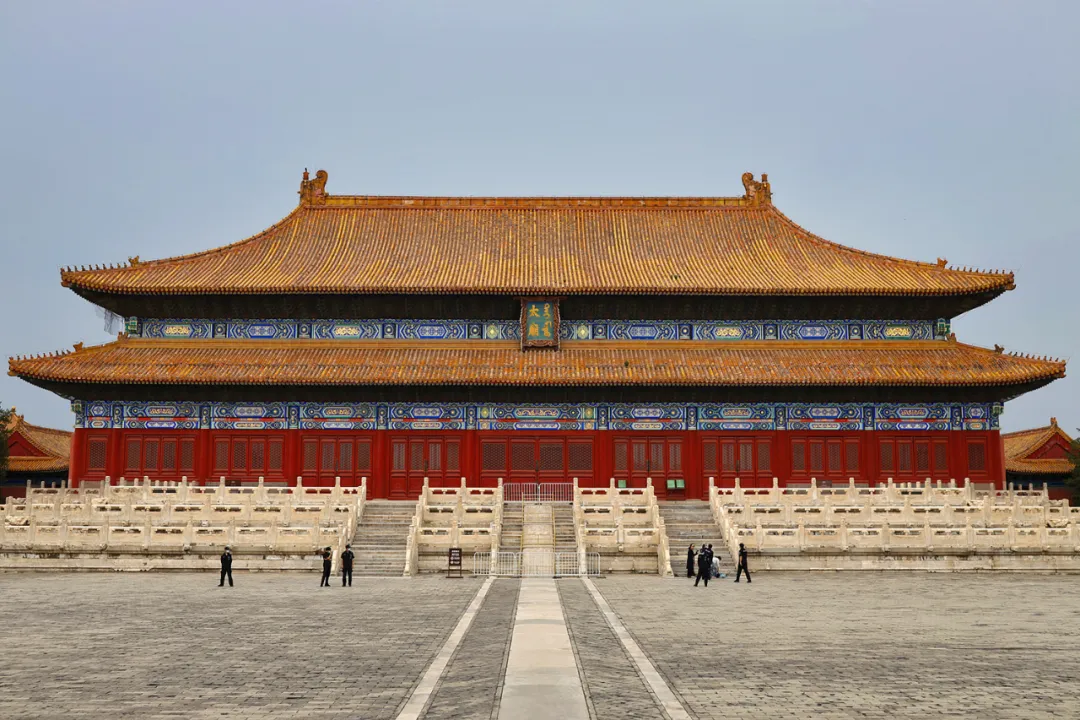
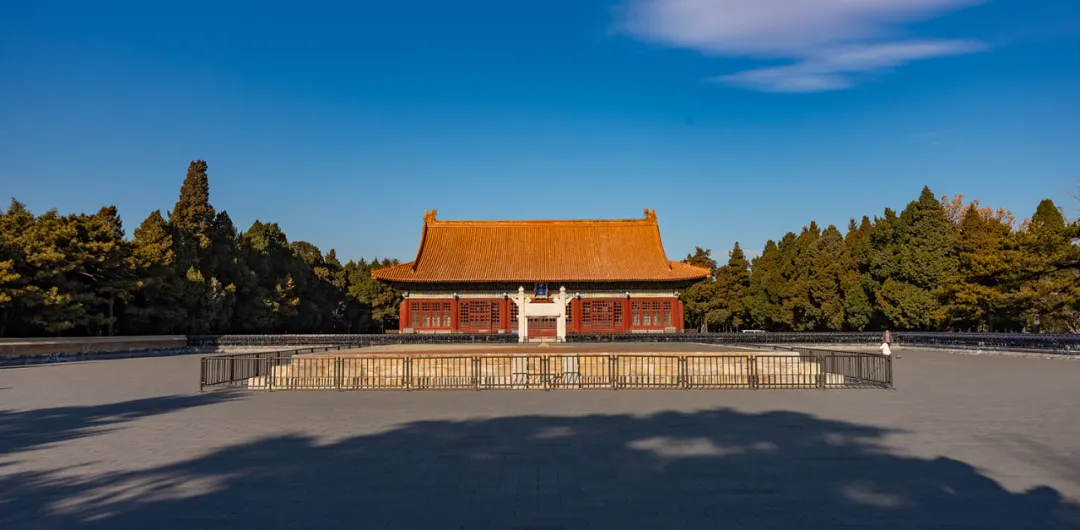
The Tai Miao (Imperial Ancestral Temple) and Sheji Altar (Altar of Land and Grain) are a pair of symmetrically arranged major buildings along the Central Axis. Tai Miao is now known as the "Working People's Cultural Palace". The Sheji Altar, situated opposite Tai Miao, is located within Zhongshan Park in Beijing.
Attraction: Zhongshan Park

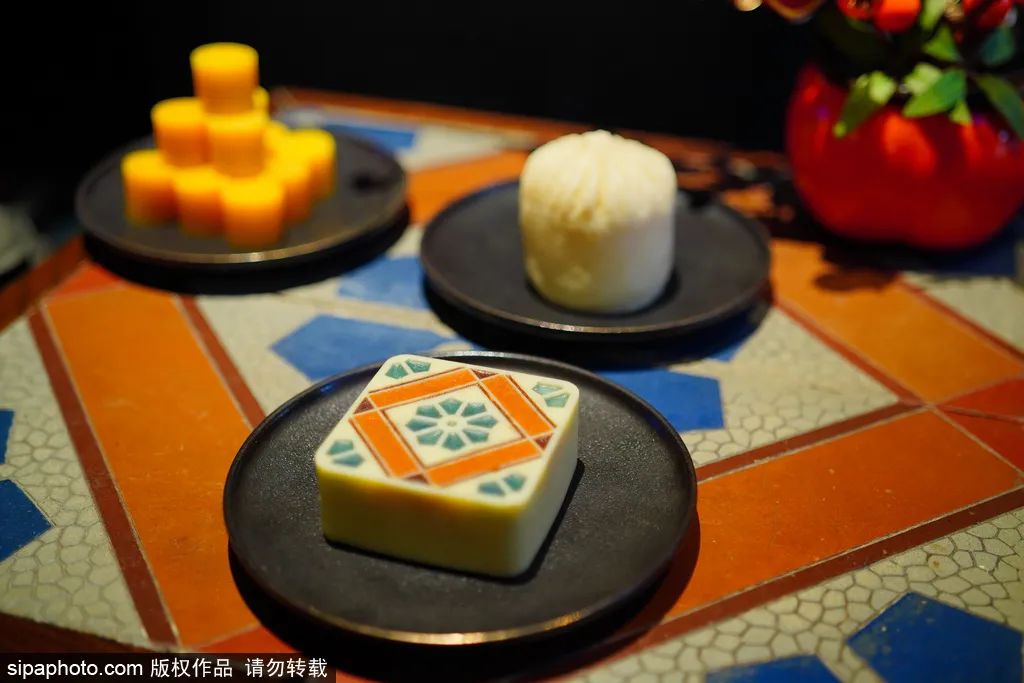
Zhongshan Park, covering an area of 23.8 hectares, is a classical memorial garden with a rich history. The park features notable attractions such as the Age-old Cypress, Zhongshan Hall, the Peace Safeguarding Arch, the Lanting Eight-column Pavilion, the Pavilion of Maxims, Huifang Garden, and Tanghuawu (a greenhouse for flowers by the waterside).
If you're in the mood for tea, don't miss the century-old tea house on the west side of Zhongshan Park—Laijin Rain Pavilion. In the past, this tea house was a favorite spot of the renowned writer Lu Xun.
According to Lu Xun's Diary, he visited Zhongshan Park 82 times and Laijin Rain Pavilion 60 times to write, enjoy tea, dine, and socialize. If you enjoy performances, the Zhongshan Park Concert Hall is definitely worth a visit!
Tian'anmen Square Complex
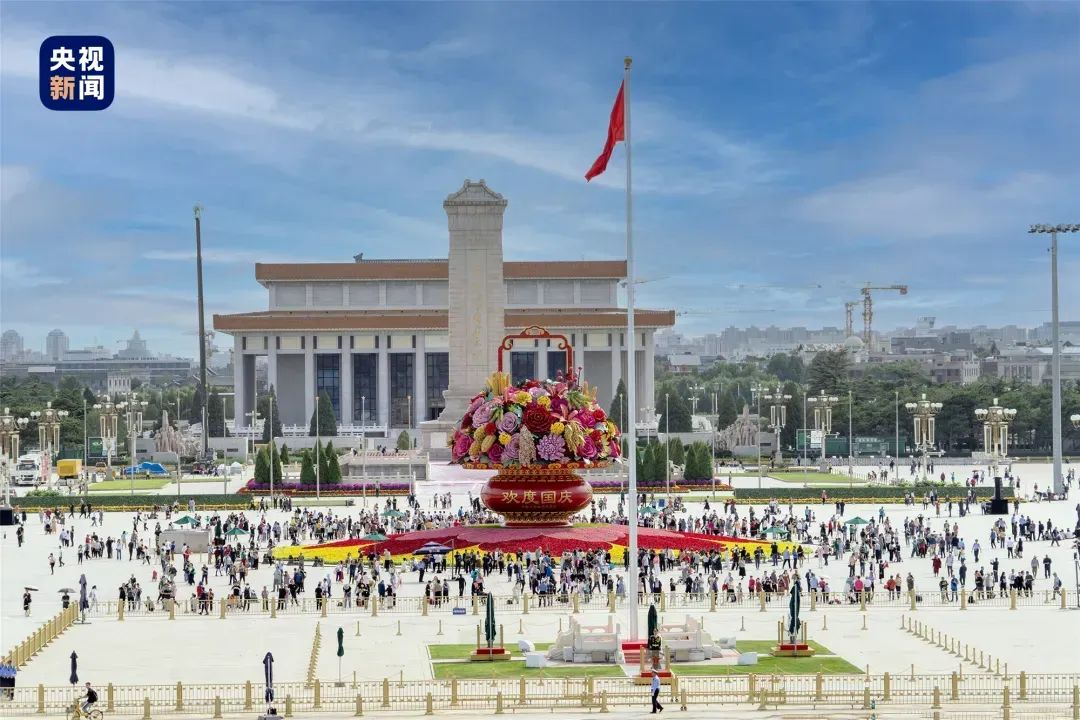
Tian'anmen Square and its surrounding buildings are located at the core of Beijing Central Axis. The complex includes the Monument to the People's Heroes and the Chairman Mao Memorial Hall as two significant memorials, alongside the National Museum of China and the Great Hall of the People as key public buildings.
Surrounding attraction: China Numismatic Museum
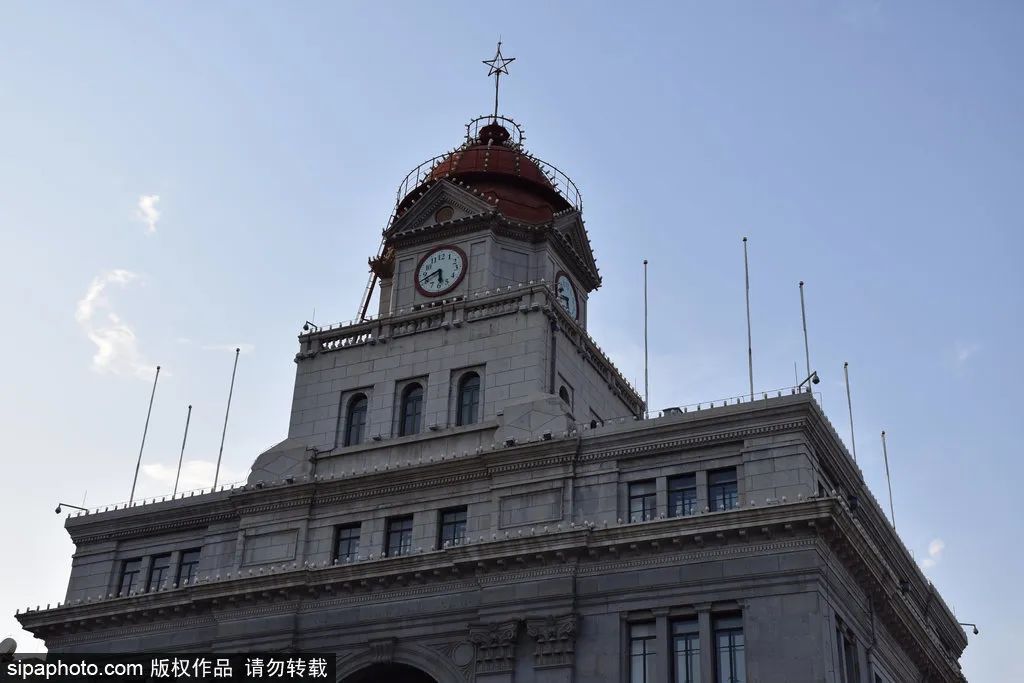
The China Numismatic Museum, under the direct administration of the People's Bank of China, is a specialized national museum dedicated to currency. The museum includes the former Beiyang Baoshang Bank and the former Beijing branch of the Central Bank, both classified as national protected heritage buildings. These structures stand as physical records of the development of China's modern financial sector.
The museum features a permanent exhibition titled The Exhibition of The Chinese Currency History, and a special exhibition, The Thematic Exhibition on Millennium of The Birth of Paper Currency. The former presents over 2,000 currency artifacts from its extensive collection, using multimedia tools to provide a comprehensive and systematic overview of the history of Chinese currency spanning thousands of years. The latter focuses on the significant invention of paper money, showcasing over 200 precious items, including Song Dynasty banknotes and Yuan, Ming, and Qing Dynasty paper currencies, highlighting the crucial role of paper money in advancing human civilization.
Zhengyangmen Gate
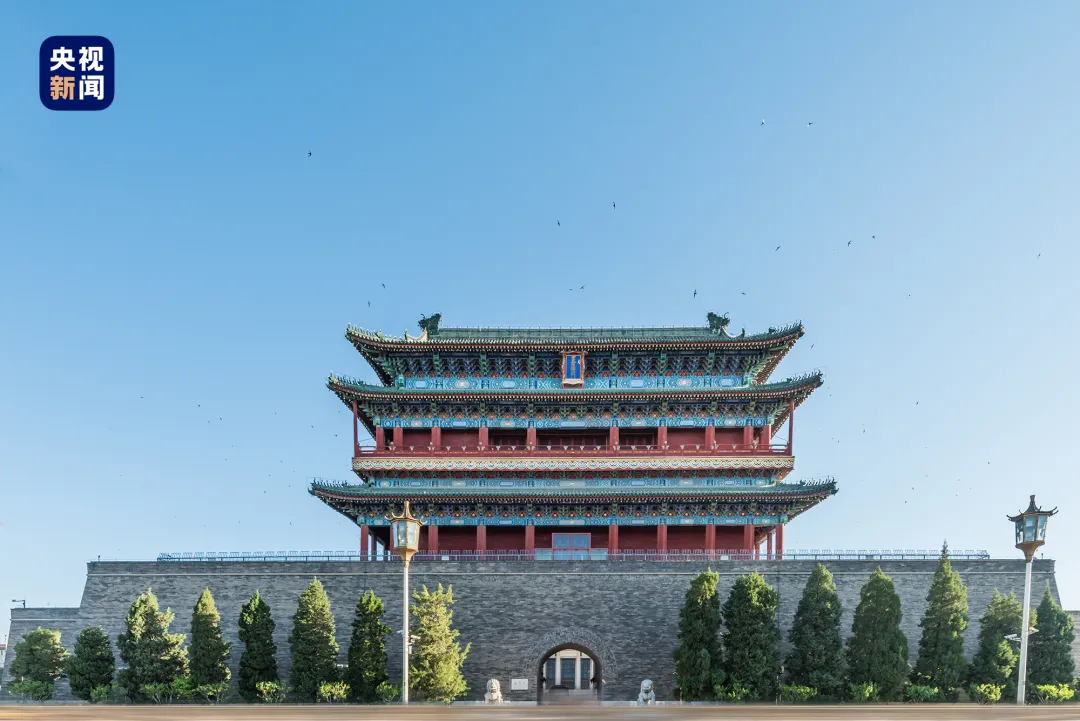

Located at the southern end of Tian'anmen Square on Beijing Central Axis, Zhengyang Gate is the highest and most magnificent of the nine gates of the Ming and Qing inner city. It is often referred to as the "First of the Nine Gates."
Zhengyang Gate consists of the Zhengyangmen Gatehouse and the Zhengyangmen Arrow Tower, and it is a landmark of the old city's wall structure. Today, Zhengyang Gate is open to the public as a museum.
Surrounding Attraction: China Railway Museum (Zhengyangmen Branch)
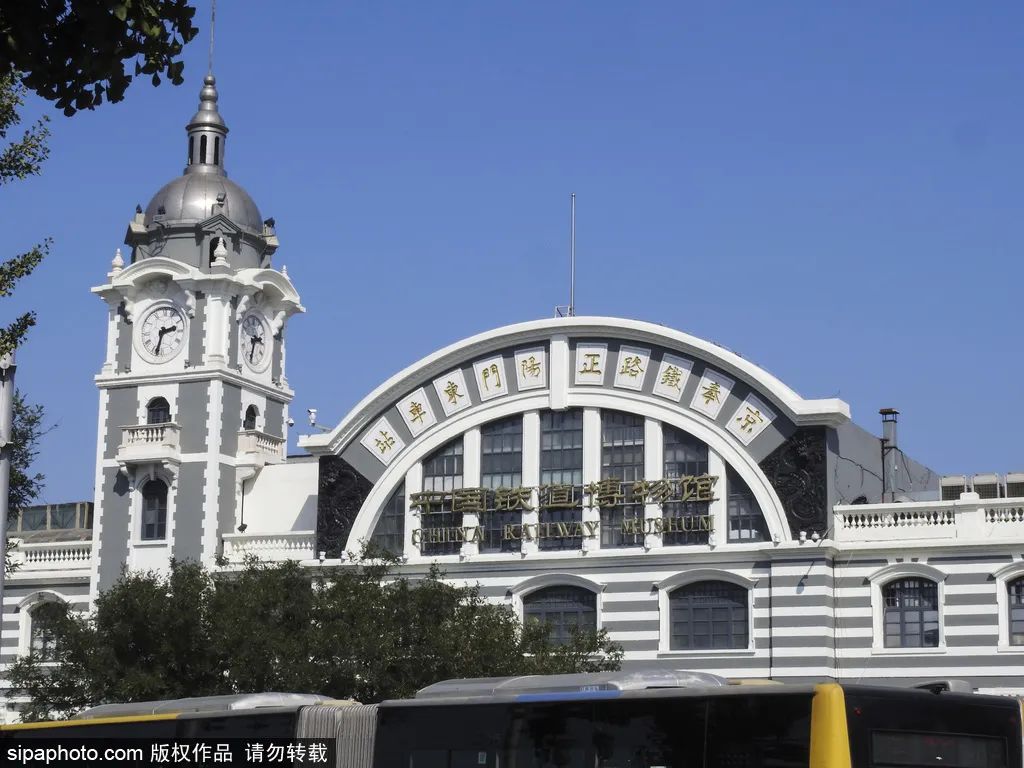
The China Railway Museum (Zhengyangmen Branch) is located on the southeast side of Tian'anmen Square and was converted from the former East Zhengyangmen Station of the Peking-Mukden Railway. The station was originally built in 1903, completed and put into service in 1906, and has withstood over a century of history. As a key gateway to Beijing at the time, it has recorded and witnessed many significant events in modern Chinese history and has a rich historical and cultural heritage.
The museum's permanent exhibition, "History of Chinese Railway Development," is divided into four sections: the early beginnings of railway development, the challenging progress, the determined efforts to advance, and the rapid strides. Through a rich collection of detailed photographs, artifacts, and advanced exhibition techniques, the display vividly and systematically chronicles the 140-year evolution of China's railways from their inception to their current advanced state. It provides a comprehensive insight into the history, culture, and technological progress of Chinese railways.
Southern Section Road Archeological Sites
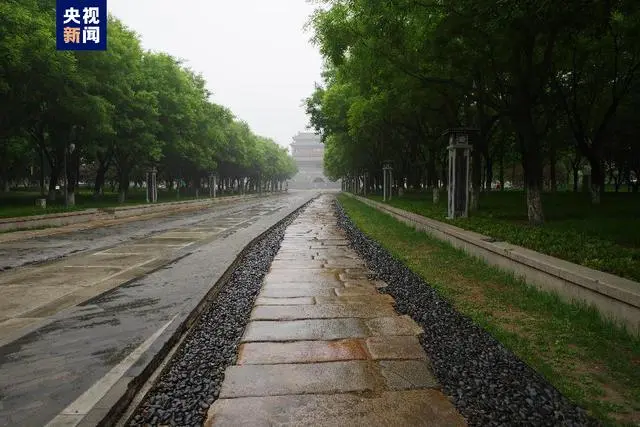
Southern Section Road Archeological Sites are a crucial route for state ceremonies during the Ming and Qing dynasties. They include three key sites: the stone-paved road remains north of Yongding Gate, the historical road remains inside Yongding Gate, and the drainage ditch ruins of the central axis road south of Zhushikou.
Surrounding attraction: Yongdingmen Park
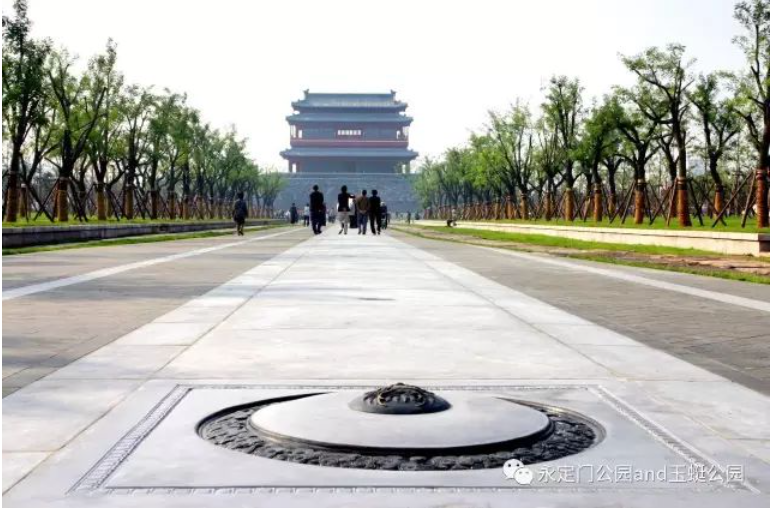
Yongdingmen Park (Dongcheng District) is a key component of Beijing's "Cross-Shaped Landscape Axis," revered as the "Dragon Vein" and "Heavenly Street." The park stretches 1,240 meters from Nanwei Lu(Rd) in the north to Yongdingmen Square in the south, with a maximum width of 285 meters, located between the culturally rich areas of Altar of the God of Agriculture and the Temple of Heaven.
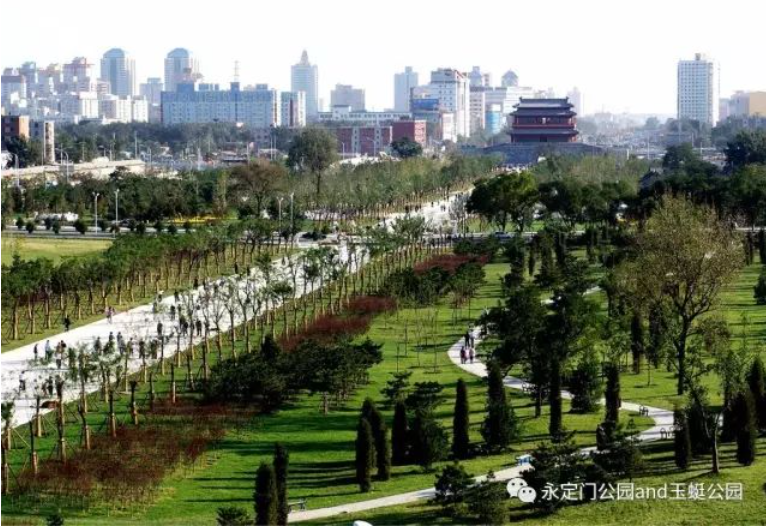
The park covers an area of 67,000 square meters and features multiple landscape axes, with the Central Axis as the main one. The straight roads on either side are lined with tall locust trees, and the expansive green spaces are adorned with rows of ginkgo trees, evergreen plants, and a variety of flowering shrubs. Landscape lighting enhances the ambiance of the axis, and through the trees, one can view the surrounding temple walls in the distance. The completed Yongdingmen Park in the southern Central Axis complements the northern Central Axis, enriching the historical and cultural atmosphere, highlighting the significance of the temple culture, and reflecting the ancient city's character. It also provides recreational space, integrating modern functionality with historical features to create a cohesive Central Axis landscape.
Temple of Heaven
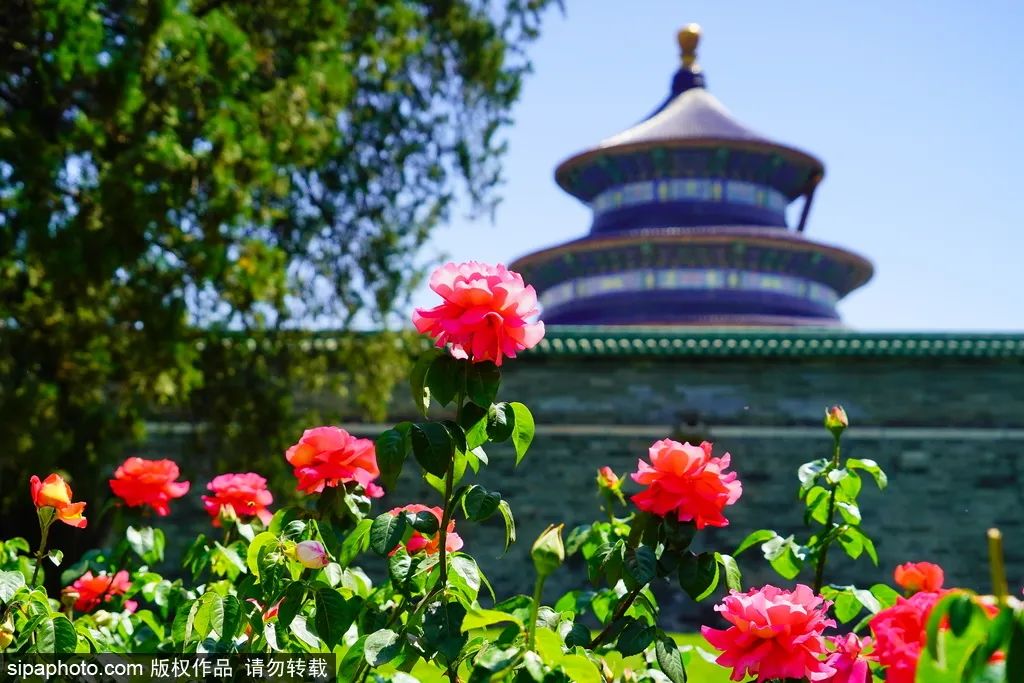
The Temple of Heaven is located in the southeastern part of the old city of Beijing, on the eastern side of the Central Axis, and is symmetrically positioned with the Altar of the God of Agriculture to the west in both location and layout. It is the largest and most well-preserved royal sacrificial complex from the Ming and Qing Dynasties in China. The architectural design and construction of the Temple of Heaven reflect ancient Chinese worldviews and represent a masterpiece of ancient royal sacrificial architecture, embodying the national rituals and cultural traditions of the Ming and Qing Dynasties.
Surrounding attraction: National Natural History Museum of China
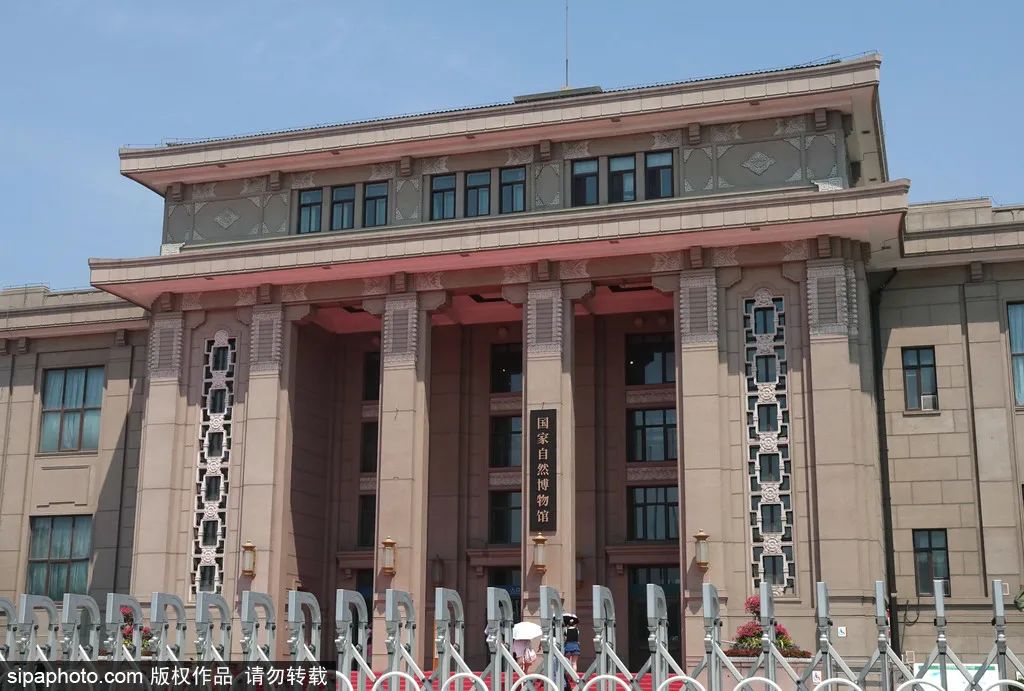
The National Natural History Museum of China is located on the east side of the southern section of Beijing Central Axis, adjacent to the World Heritage site, the Temple of Heaven.
As China's only national-level, comprehensive natural history museum, it represents the nation's efforts to protect, research, collect, interpret, and exhibit natural specimens and natural heritage with historical, scientific, and artistic value. The museum's core exhibition focuses on biological evolution, featuring permanent exhibits such as ancient reptiles, ancient mammals, invertebrates, and the wonders of Africa. These displays illustrate biodiversity and its relationship with the environment, creating a panoramic view of life's evolution on Earth. It's a great place to visit with children!
Altar of the God of Agriculture

The Altar of the God of Agriculture, as the largest surviving ancient royal altar for agricultural deities in China, reflects the traditional society's respect for farming culture and carries the ritual traditions of the Ming and Qing dynasties for honoring the agricultural gods.
Attraction: Beijing Ancient Architecture Museum
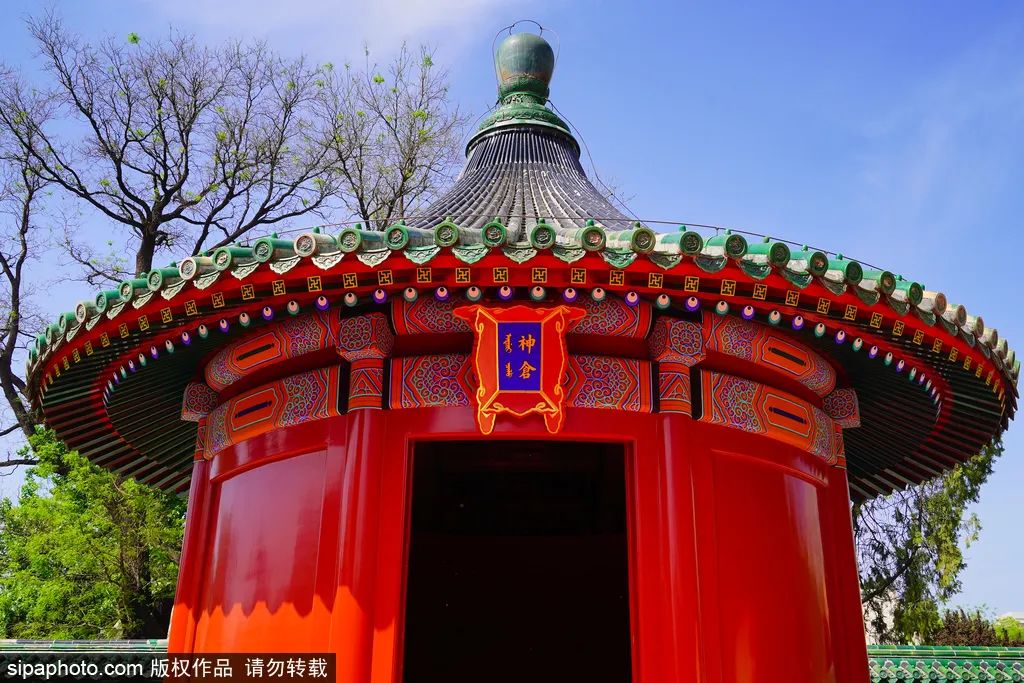
The Beijing Ancient Architecture Museum is located within the historic Altar of the God of Agriculture, an imperial sacrificial site from the Ming and Qing dynasties. The museum's most prized exhibit is the "Heavenly Palace" coffered ceiling from the Longfu Temple's Zhengjue Hall. The coffered ceiling is intricately decorated with cloud patterns on its six circular tiers, and its uppermost layer features a celestial map with 1,427 stars.
This year, Shencang, dubbed the "World's No. 1 Warehouse," has opened to the public for the first time in over 200 years since its relocation, drawing many visitors to explore this historic site.
Yongdingmen Gate
Yongdingmen Gate, as the southern endpoint of the traditional Central Axis, is a significant landmark along the southern section of this axis. Among the many city gates in Beijing's outer city, Yongdingmen Gate is the largest in scale and most exquisitely crafted. Originally known as "Outer Zhengyang Gate", it was renamed Yongdingmen Gate during the Ming Dynasty, meaning "Eternal Stability".
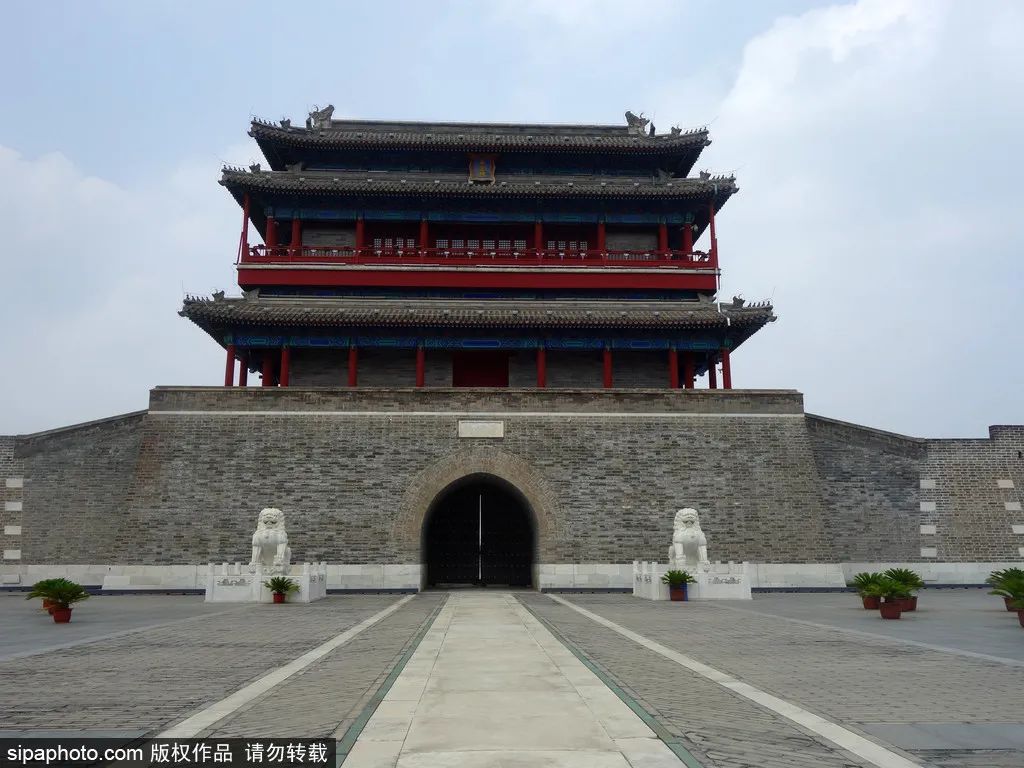
From the Yongdingmen Tower, one can gaze northward along the 7.8-kilometer Beijing Central Axis that stretches along the Yongdingmen Imperial Road, with the Zhengyangmen Tower visible in the distance.
Surrounding Attraction: Capital Grain Museum
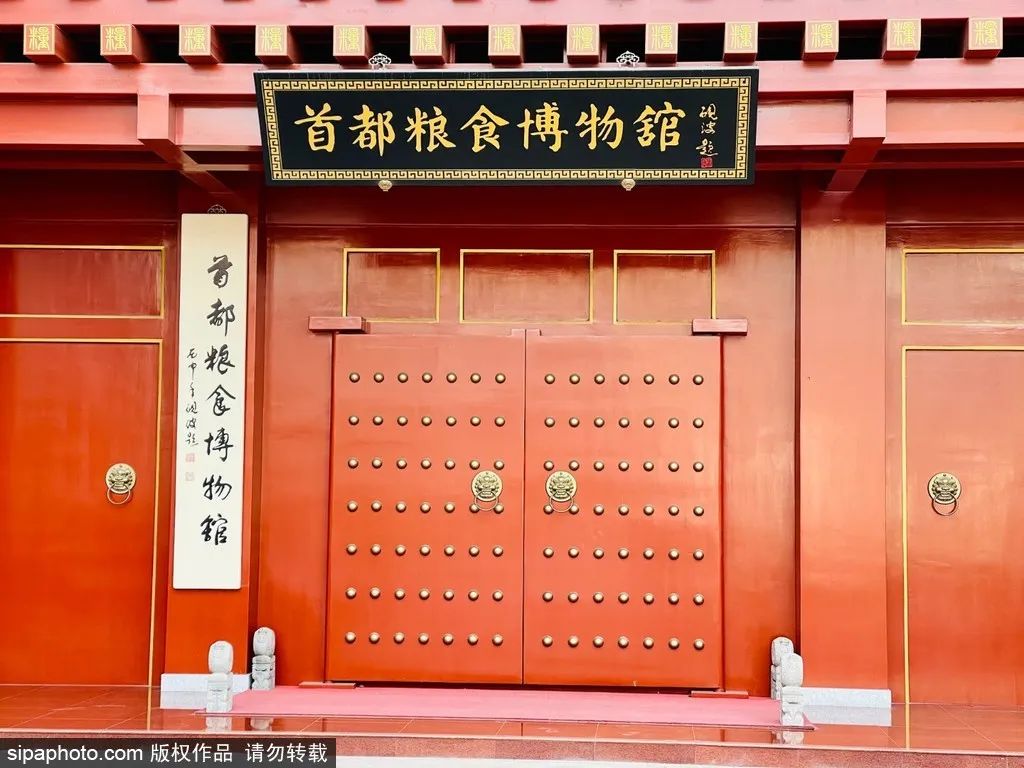
Do you know how grains originated? Are you familiar with ancient grain processing tools like the grain winnowing machine and stone mill? Do you wonder what old grain shops and taverns looked like in Beijing during the Ming and Qing dynasties? The Capital Grain Museum is Beijing's only museum dedicated to the grain industry, where you can find answers to all your questions about grains.
The museum employs a variety of methods including physical exhibits, photographs, scale models, and scene reconstructions, complemented by advanced display technologies such as transparent screens, touch screens, and projections, to present comprehensive information on the origins, cultivation, storage, processing, and distribution of grain.
Urban dwellers often have limited opportunities to directly experience agricultural practices. Here, you can not only fill in these gaps in knowledge but also gain an appreciation for the effort involved in bringing food to the table.
Gather your friends and explore the Beijing Central Axis together!


